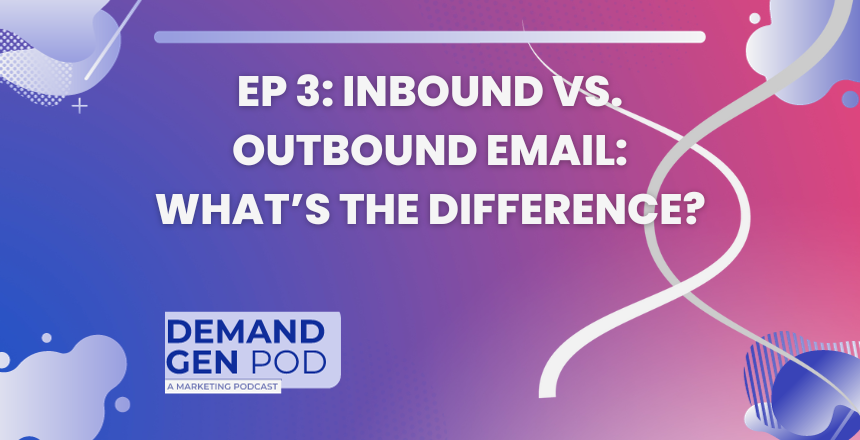Today on the Demand Gen Pod, Episode 3, Ryan, the host, discusses the differences between inbound and outbound email marketing strategies. He explains that inbound emails involve gathering consent from recipients and sending them valuable and relevant content to build relationships and trust. Examples of inbound content include newsletters, educational emails, and webinars. The primary goals are to educate subscribers, nurture leads, and convert them into customers.
Outbound emails, on the other hand, are sent to recipients who have not opted in, often using purchased lists. The objective is to increase brand visibility and drive conversions, although conversion rates are typically lower. Outbound emails can be sales-oriented or used to promote events and content.
Ryan emphasizes the importance of segmenting email lists and tailoring content to specific audiences. He suggests combining inbound and outbound strategies by using outbound emails to attract new subscribers for inbound campaigns. Additionally, he advises analyzing engagement and conversion metrics to optimize email campaigns continuously.
Ryan concludes by stressing the need to build trust with subscribers, experiment with different campaigns, and stay updated on new trends and technologies in email marketing.
Summary notes from Episode 3:
Certainly! Below is an outline with chapters and timestamps based on the
provided transcript: ### Outline: **Chapter 1: Introduction** \- 00:01 |
Welcome and Introduction **Chapter 2: Importance of Email Template Design** \-
00:04 | Significance of Email Template Design \- 00:20 | Understanding
Audience and Email Types **Chapter 3: Types of Email Templates** \- 00:29 |
Business-Oriented vs. Marketing Style Emails \- 00:48 | Text-Based Templates
for Sales \- 01:12 | Visuals and Brand Personality **Chapter 4: Consistent
Branding** \- 01:46 | Differentiating Email Types with Branding \- 02:21 |
Leveraging Colors and Design **Chapter 5: Mobile Responsiveness** \- 02:25 |
Importance of Mobile Responsiveness \- 02:35 | Optimizing for Mobile Devices
\- 03:04 | Designing for Mobile Responsiveness **Chapter 6: Structural
Considerations for Mobile** \- 03:14 | Layout Adjustments for Mobile \- 04:44
| Handling Images and Text on Mobile Devices **Chapter 7: Font Size and
Readability** \- 05:12 | Selecting Appropriate Font Sizes \- 05:39 | Ensuring
Readability for Older Audiences **Chapter 8: Clear and Compelling CTAs** \-
06:04 | Designing Effective CTAs \- 06:48 | Testing and Optimizing CTAs
**Chapter 9: Brand Consistency** \- 07:10 | Importance of Consistent Branding
\- 07:58 | Limiting Fonts and Font Sizes **Chapter 10: Enhancing Email Design
with Visuals** \- 08:30 | Utilizing Images and Visuals \- 08:58 | Creating
Visually Appealing Emails **Chapter 11: Testing and Optimization** \- 09:12 |
Importance of Testing and Optimization \- 09:37 | Evaluating Design
Effectiveness \- 09:59 | Multiple Links to Boost Click-Through Rates **Chapter
12: Accessibility Considerations** \- 10:25 | Using Alt Text for Images and
Links **Chapter 13: Personalization and Dynamic Content** \- 11:05 |
Leveraging Personalization and Dynamic Content **Chapter 14: Conclusion** \-
11:28 | Enhancing Customer Experience and Engagement \- 11:33 | Conclusion and
Contact Information This outline captures the key topics and corresponding
timestamps discussed in the meeting.
